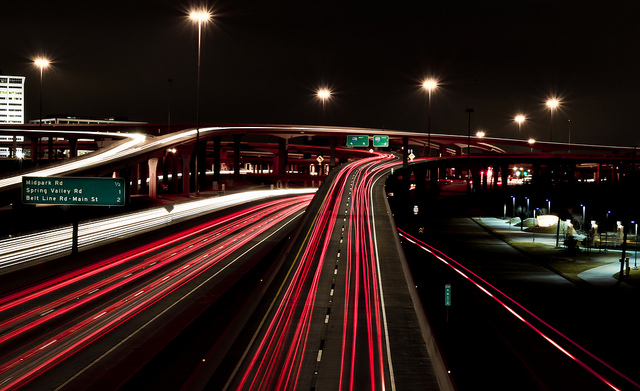
Cities have huge issues related to transportation – massive traffic congestion, necessary road expansions, too few sidewalks for pedestrians, inadequate bike lanes, safety issues and poor air quality caused by idling vehicles. Solutions are hard to come by and big changes are emerging in highway planning.
Transportation planners are rethinking how roads should be designed and built. In Dallas, the Texas Department of Transportation (TxDOT) is leading an effort called CityMAP. The group working on the project includes government officials, community leaders, urban planners and local developers. Their task is to find a better way to redesign a highway system largely built in the post-World War II era and one that no longer functions well.
Most major cities in Texas have significant problems and there is very little consensus about what should be done. Dallas is struggling with a problem related to I-345, an elevated highway that runs through downtown. The roadway connects the Central Expressway and I-45 and that is rather critical. But, there are advocates who want the city to tear down the highway so that a large section of Dallas between downtown and Deep Ellum can be opened up for development. This would be a huge and very disruptive project.
Austin has a similar problem with I-35, a highway that runs through the heart of the central city and divides it into two distinct sections – East Austin and West Austin. TxDOT’s plans for the highway include lowering and expanding a substantial section of the roadway through downtown Austin. But, similar to the controversy in Dallas, there are others who want the lowered highway capped. That would turn the interstate into a tunnel and allow for development on top. It could also reunite a divided city, removing the interstate as a barrier between East and West Austin. No consensus has been reached regarding the best option.
These problems are similar to many found in other Texas cities. And, to add to the controversy, highway planners throughout the country are now looking at transportation objectives in significantly new ways.
A large urban development movement called Complete Streets has begun to influence many new transportation plans. The concept behind this movement is considered radical by some and totally practical by others. Complete Streets promotes the concept that streets are public spaces that should belong to the people. Complete Streets advocates say streets should be designed with people in mind. Opponents ask – “Which people should be considered – people on bicycles or people in cars?”
In the past, streets and highways were designed for cars and the objective was to move automobile traffic as quickly as possible. But, the Complete Streets program now questions that concept because safety, congestion, pedestrian traffic and cyclists as well as air quality are also important considerations.
The Complete Streets movement advocates slower car movement, increased pedestrian traffic and the encouragement of cyclists. Projects that used aspects of the Complete Streets program are evident in New York (where Times Square has been closed to vehicular traffic), San Francisco (where Market Street has been redesigned to decrease automobile traffic) and in Austin (where formerly one-way streets are being converted to two-way traffic to encourage slower, safer vehicle speeds).
Bicycle lanes, wider sidewalks, the removal of traffic lights in favor of four-way stop signs, fewer car lanes and attractive, convenient bus shelters – these are all suggested options within the Complete Streets template. Citizens, obviously, don’t all agree that these are the best considerations, but many cities are selecting one or more aspects to build into new transportation planning models.
It’s definitely a trend worth watching. Transportation planning, like everything else, is evolving more rapidly than the average citizen realizes.
To keep up to date with the latest news and trends in local and state government, subscribe to our newsletters.

